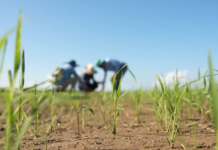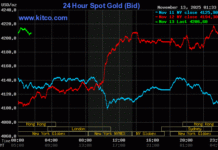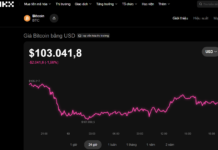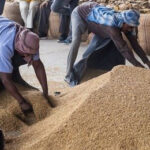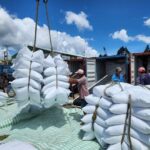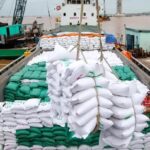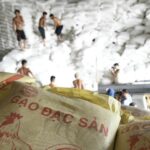
Illustrative image
South Korea’s rice exports to Japan have reached a record high in the first half of 2025 as the latter faces a severe food shortage, causing domestic rice prices to soar. This is the first time in over three decades that South Korean rice has made a large-scale appearance in the Japanese market, despite high import tariffs.
According to the Korea Agro-Fisheries & Food Trade Corporation, in the first six months of this year, the country exported a total of 416 tons of rice to Japan, 26 times higher than the previous annual record of 16 tons in 2012. The 2012 exports were mainly for humanitarian relief after the 2011 earthquake and tsunami disaster in Japan.
Normally, Japan imposes high import tariffs on rice, approximately 341 yen (equivalent to $2.32) per kg. However, due to the surge in domestic rice prices, South Korean rice is becoming more competitive, despite the tariffs. According to Japan’s Ministry of Agriculture, Forestry and Fisheries, the average price of a 5-kg bag of rice in May reached around 4,200 yen, double that of the previous year. In comparison, a 4-kg bag of South Korean rice costs about 4,000 yen, according to the National Agricultural Cooperative Federation of South Korea.
The main rice variety exported is Japonica, which is popular in both South Korea and Japan. Additionally, some famous Japanese rice varieties, such as Koshihikari and Akibare, have also been cultivated in South Korea in recent years. Local governments are working to develop more domestic varieties to cater to both domestic demand and exports.
Icheon, a region renowned for its high-quality rice in South Korea, has recently seen a significant number of Japanese tourists purchasing rice to take home. In local supermarkets, 10 kg of Icheon-grown rice is sold for approximately 40,000 won ($28).
Provincial and county governments in South Korea are seizing the opportunity presented by Japan’s rice shortage to expand their export market share. Notably, Hadong County exported rice to Japan for the first time in May, with a volume of 80 tons, and plans to export an additional 200 tons by the end of the year.
While Japan faces a shortage, South Korea has a surplus of rice. According to data from South Korea’s Ministry of Agriculture, Food and Rural Affairs, the per capita rice consumption in South Korea has significantly dropped from 93.6 kg in 2000 to 55.8 kg in 2024, a decrease of nearly 40%. A similar trend is observed in Japan, where per capita consumption has declined from 64.6 kg to 51.5 kg during the same period.
South Korea’s annual rice surplus in recent years has consistently exceeded 200,000 tons. In response, the government has set a target to reduce rice paddy fields by 80,000 hectares, or 11%, in 2025. However, the current rate of land conversion is only 1% per year, making it challenging to achieve this goal. Some experts also warn that a drastic reduction in rice paddy fields could lead to a future shortage if extreme weather events or abnormal supply and demand fluctuations occur.
The Great Rice Rush: From World ‘Kings’ to Unlocking the Floodgates
The golden rice fields are ready for harvest, yet the crops remain standing in the fields as traders refuse to buy. Rice mills and processing plants are overwhelmed with stock, forced to clear their warehouses at discounted prices. This is an alarming situation for Vietnam’s rice industry, once considered a stronghold for the country’s agriculture.
Will Vietnam’s Rice Exports Break Records Again This Year?
With production and prices on the rise, Vietnam’s rice industry is optimistic about its export prospects. The industry is hopeful that it will once again reach the impressive milestone of exporting approximately 8 million tons of rice, bringing in a substantial revenue of over $5 billion.
The Rising Price of Rice: Forecasting Record-Breaking Exports
The price of Vietnamese rice is surging once again, reclaiming its position as the most expensive in the world. Despite this, traditional partners have surprisingly announced their intention to import even larger volumes than initially anticipated, suggesting that rice exports could break records in both volume and value this year.


